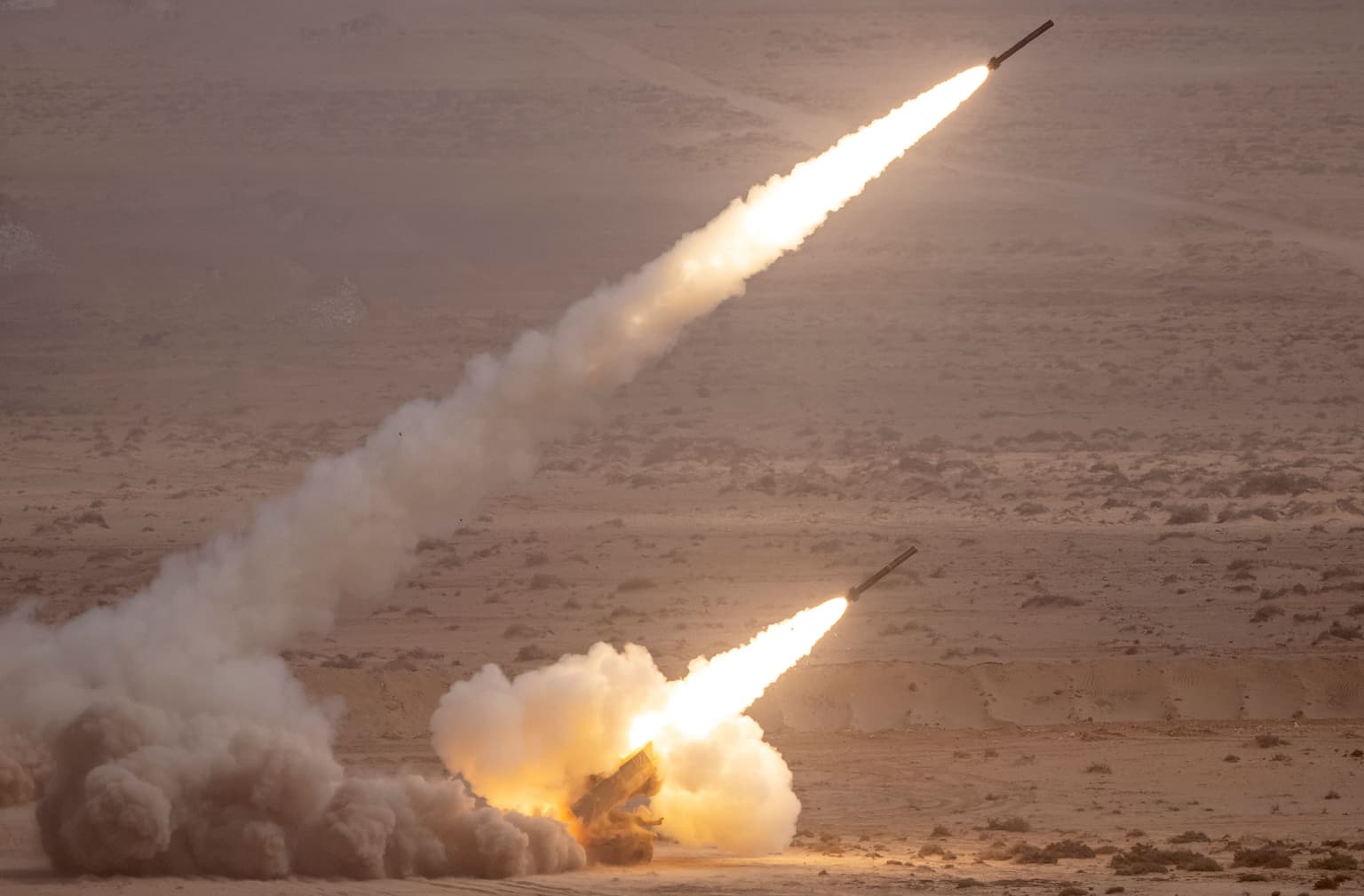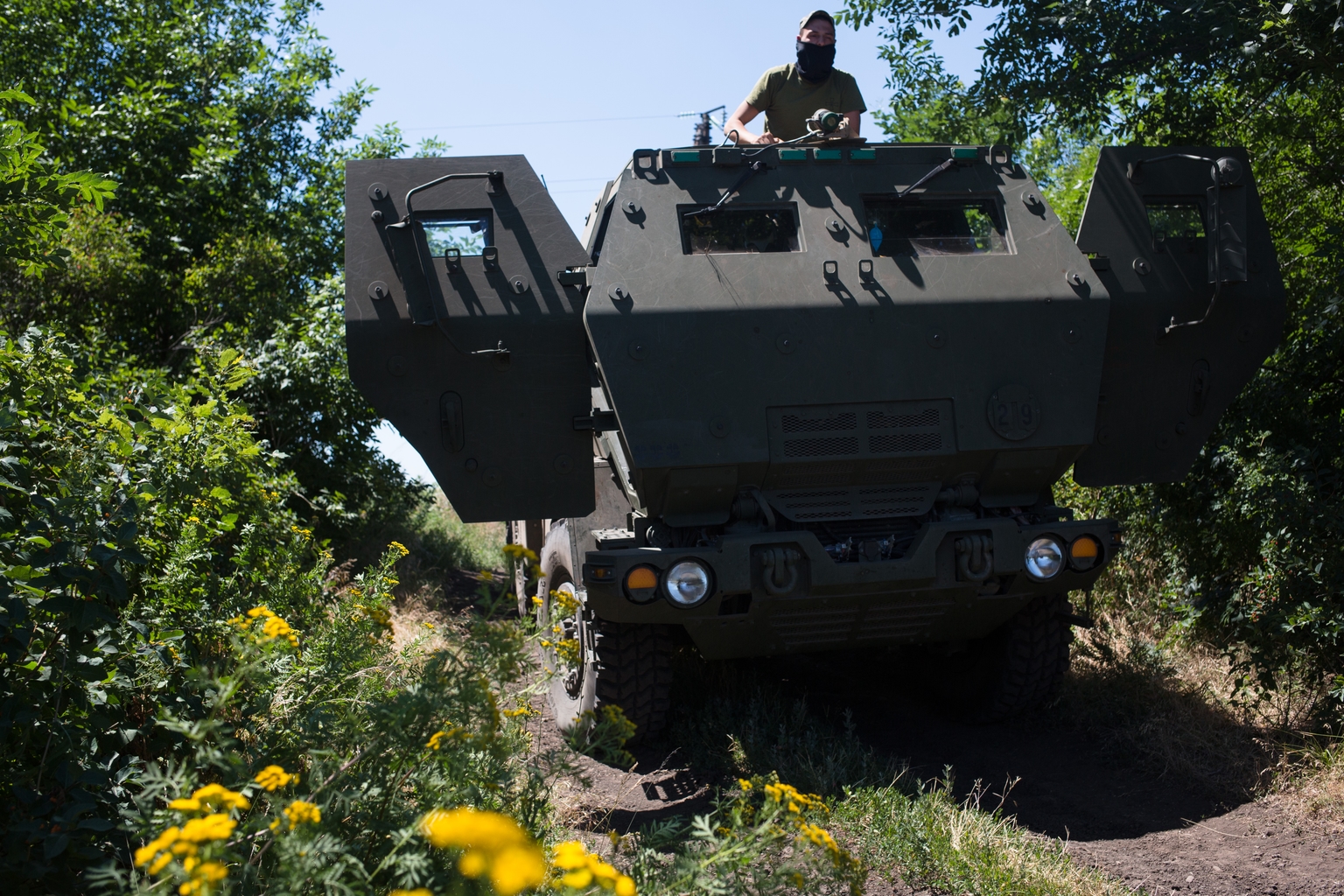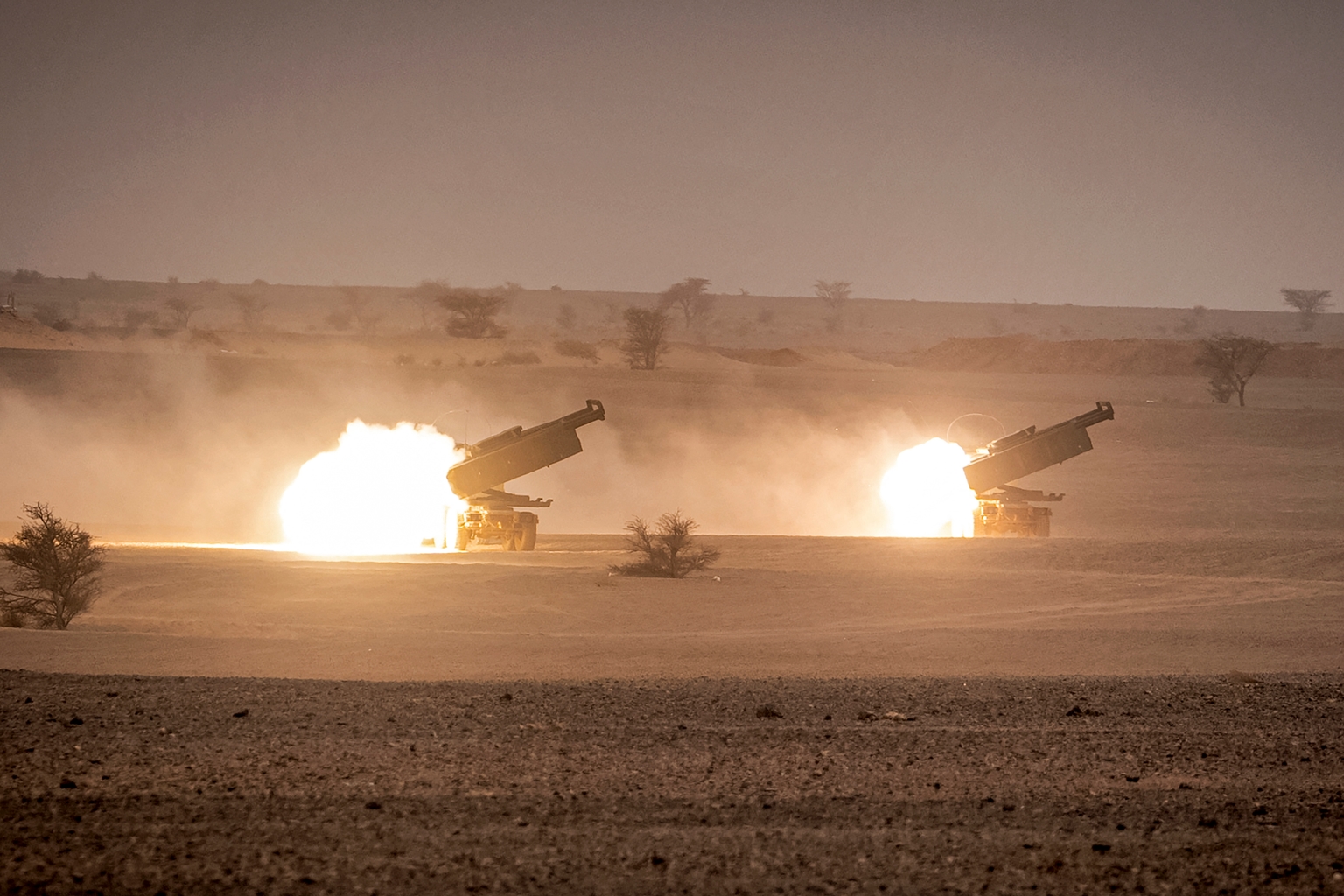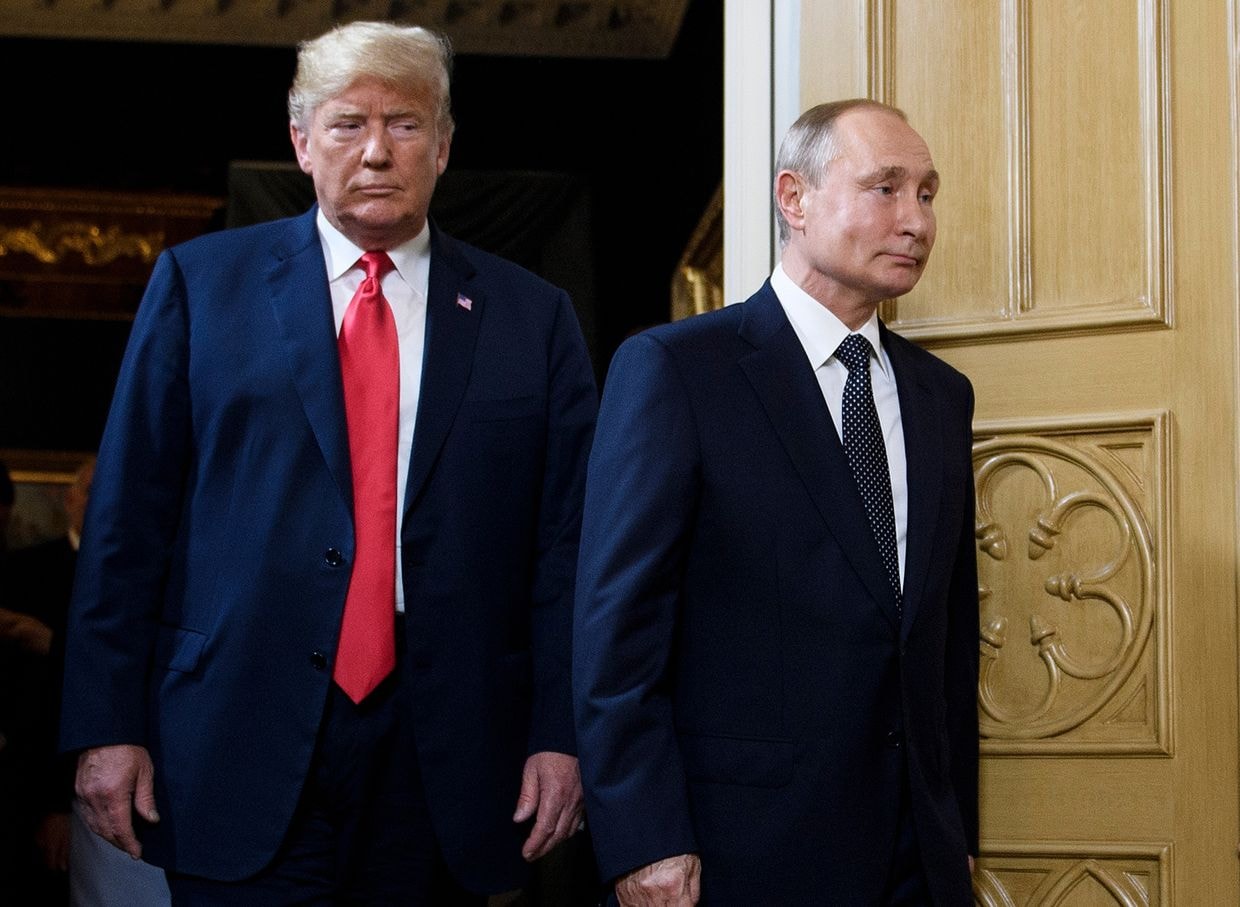Why is Russia so vulnerable to HIMARS in Ukraine?

It’s been nearly a month since U.S.-provided High Mobility Artillery Rocket System, or HIMARS, had their long-awaited debut in Ukraine, but their combat record is already extensive.
Using all the heavy and long-range weaponry available to it, including HIMARS, Ukraine began a campaign that has destroyed dozens of significant fuel and munition depots in occupied parts of Ukraine, jeopardizing Russian logistics, vital supplies, and artillery power.
Ukraine’s military then moved on to using rockets against Russian-controlled airfields, bridges, and transportation points.
Now, HIMARS are also directly challenging Russia's air defenses, wiping out expensive advanced radars far behind the front lines.
Contrary to its propagandistic bravado, the Russian military has appeared helpless — or at least very vulnerable — to the dozen or so U.S.-provided HIMARS striking the very essence of Russia’s military advantage over Ukraine, becoming an important factor in the war.
And as the latest month of hostilities demonstrates, there’s little Russia can do about it.
Its own systemic flaws, outdated tactics, lack of initiative, and previous failures in the war leave it few chances to confront the American weapons now in Ukrainian hands.
Russian weak spots
Upon estimates, there are between eight and 12 HIMARS currently on the battlefield in Ukraine. The U.S. on July 20 announced the delivery of four more following the 4th Ramstein meeting of defense ministers. An undisclosed number of M270 MLRS, a similar but heavier truck-mounted system, provided by Western countries, are also already operational in Ukraine, according to Defense Minister Oleksiy Reznikov.
Within just weeks, a few HIMARSs have managed to strip Russia of the majority, if not all of, its most considerable ammunition and fuel depots in Donbas and Ukraine’s occupied south.
With almost every nightfall, videos of massive detonations at Russian depots in Kherson Oblast or Donbas pop up on social media.

The situation has even prompted Russian military bloggers to openly raise alarm about escalating munitions hunger, as Russian artillery supremacy was the key behind its incremental advances in Donbas.
What’s more, the inception of HIMARS has also allowed Ukraine to make use of its old Soviet Tochka-U ballistic missiles, which had been stashed away by the Ukrainian military due to a lack of heavy weaponry. Now that Ukraine has HIMARS, it can afford to use Tochka-U more often.
Tochka-U systems have an effective range of up to 100 kilometers and are more powerful than HIMARS, but far less precise and much easier to intercept. The Tochkas and HIMARS are spearheading the ongoing campaign to strike deep inside the Russian-held rear.
As part of their expanding hit list, HIMARS were reportedly used to target Russia's 20th Motorized Infantry Brigade headquarters, with the brigade commander Colonel Aleksey Gorobets and two other senior commanders killed on July 12.
The rockets have also successfully targeted a Repellent-1 on July 18 in Nova Kakhovka and a Podlet K1 in Lazurne, critical Russian air defense radars in Kherson Oblast. Moreover, HIMARS were used in a series of strikes upon the Antonivsky Bridge near Kherson, which rendered a key Russian supply line temporarily unusable on July 20.
Read also: What would a Ukrainian counter-offensive in Kherson look like?
Even before these latest strikes, on July 15, the Pentagon issued a statement confirming the HIMARS’ “significant impact” on Russia’s war in Ukraine. Weeks go by, but Russia has not been seen as effective at countering HIMARS strikes, destroying the systems, or saving their critical infrastructure from them. Russia continues losing near-frontline ammo and fuel dumps, and all of the known confirmed HIMARS attacks have been impactful.
Russia also appears to be incapable of quickly de-concentrating its depots, which could save its munitions in the occupied parts of Ukraine. The Russian military has held on to the outdated Soviet approach of having a hyper-centralized command and control system that doesn’t allow for much initiative from medium- and low-rank leaders.
When it comes to ammunition handling, the Russian military is still very dependent on manual labor as soldiers have to load and unload thousands of ammo bundles as they arrive. Russian logistics still fall short of effective communications and automatization, lacking working hands and competent mid-level commanders to cope with a much more complicated depot network.
Moreover, Russian supply lines depend on railway communications, which inevitably keeps them bound to railway stations and junctions. Russian military bloggers have admitted that switching to a more flexible system would take months or even years, which is not a viable solution during the ongoing war.
Read also: How Western heavy weaponry can make a difference in the war in Ukraine
Russians could make their depots safer by relocating them farther away from the front line.
The high-precision M30/M31 GMLRS rockets used by Ukrainian HIMARS have an effective range of some 85 kilometers. Therefore, locating their depots beyond this dangerous effective range would be the answer to the problem. But by pulling them back, Russia is also greatly complicating its already very problematic logistics.
Russian trucks would have to make it 90 or 100, or even 120 kilometers, to bring supplies to frontline units from dumps instead of the more usual 20 or 30 kilometers. This would take much more time, fuel, and even more manual labor.
According to standard practice, a truck could complete just one round trip daily between a frontline unit and a supply depot located beyond the HIMARS effective range 90 kilometers away from the front line. Withdrawing to new loading areas at safe railroad centers in southern Ukraine would render Russian delivery time between one and a half to two times slower than usual.
But Russia’s military keeps running short of trucks, and truck drivers were killed in huge numbers during Russia’s early offensive deep inside Ukraine. According to the open source project Oryx documenting Russian war losses, the Russian military has lost at least 1,254 supply trucks and fuel tankers.
Even if they are eventually relocated farther away from the front line, Russian depots would still be threatened by Ukrainian Tochka-U missiles, which have already swept off some of Russia’s most giant ammo dumps in Donbas, such as the one in the city of Khrustalniy (formerly Krasniy Luch) in Luhansk Oblast on June 18.
Should Ukraine be finally provided with 300-kilometer ATACMS missiles, the situation will become even more complicated for Russia.

Hard to kill
Another issue is that over the last month, despite a lot of effort and propaganda buzz, Russia’s defenses against the HIMARS have hardly been effective.
During a Pentagon briefing on July 20, U.S. Chairman of the Joint Chiefs of Staff General Mark Milley, confirmed that Russia had not destroyed a single HIMARS provided to Ukraine. The top general also reiterated that the Ukrainian military had been “very effective” at using them against Russia.
A HIMARS is indeed a challenging target for today’s Russian military.
Fast and very mobile, they take their positions deeper in the Ukrainian-controlled rear, where Russia still has a rather weak situational awareness and where they are very hard to spot and kill immediately, even with high-precision weapons. According to experts polled by the Kyiv Independent, the only realistic chance for Russia to destroy the HIMARS is to strike when a Ukrainian crew fails to leave its position quickly, or when it exposes its location.
Read also: 'Welcome to hell': Ukrainian airborne fighting Russia in Donbas woods
The Russian air force could also be a serious threat. But as these last months of war have demonstrated, Russian attack aircraft have been cautious about going any deeper into Ukrainian-controlled territory, mainly due to strong air defense and the abundance of man-portable anti-aircraft systems (MANPADS), including those provided by the West.
Even advanced Russian air defense systems find it hard or impossible to intercept incoming HIMARS rockets.
Russia’s much-advertised S-400 or Pantsir-S1 air defense systems, which have been deployed in occupied Ukraine, have not been effective at stopping them over the last few weeks. Russia’s S-300 or S-400 systems are supposed to be able to successfully intercept medium- and long-range aerodynamic (cruise missiles) or ballistic targets.
But the problem is that HIMARS’ rockets are very hard to notice on time.
HIMARS M30/M31 GMLRS rockets strike their targets at the speed of Mach 2.5, or nearly 3,062.6 kilometers per hour. Therefore, when they have to reach a target 80 kilometers away, they spend some 94 seconds in the air before they hit their target. But they also fly at altitudes far lower than any cruise or ballistic missile, giving Russian air defense little time to notice them and react.
This means Ukrainian-operated HIMARSs continue delivering strikes anywhere they can reach.
Especially when the Ukrainian military overcharges Russian air defenses with barrages of Tochka-U, Uragan, or Smerch rounds — and then shoots a full salvo of HIMARS to get a guaranteed hit.
____________________
Note from the author:
Hello! My name is Illia Ponomarenko, the guy who wrote this piece for you.
I hope you found it useful and interesting. I work day and night to bring you quality stories from Ukraine, where Russia is waging the biggest war in Europe since WWII. My little homeland, Donbas, is now the site of the worst fighting. We are helping to keep the world informed about Russian aggression. But I also need help from every one of you — to support Ukrainian wartime journalism by donating to the Kyiv Independent and becoming our patron. Together, we can help bring peace to Ukraine.










